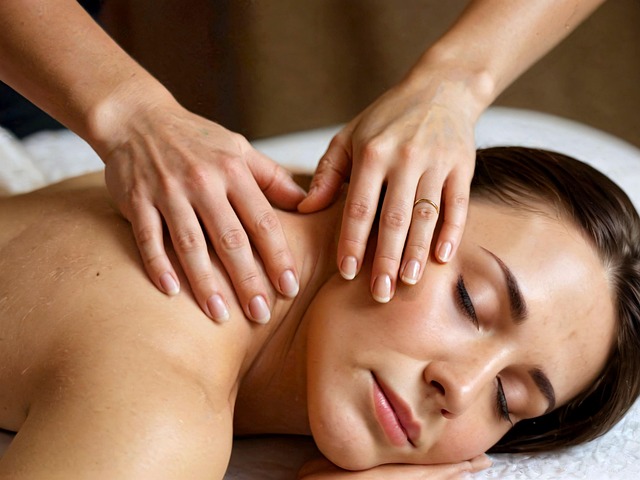Cold water immersion therapy (CWIT), including cold plunges and ice baths, is a popular practice among athletes seeking improved performance and recovery. This involves short-term submersion in water below 59°F (15°C). CWIT triggers physiological responses like vasoconstriction and increased circulation to vital organs, reducing inflammation, accelerating recovery, boosting mental clarity, and enhancing overall well-being. Benefits also include better endurance, muscle soreness relief, and a natural alternative to cryotherapy for athletes' post-workout recovery.
Discover the ancient practice turned modern trend of cold water immersion therapy, or cold plunging, and its surprising health impacts. From athletes seeking faster recovery to individuals aiming for improved overall well-being, this extreme cold exposure has garnered attention for its potential benefits.
Learn about the science behind cryotherapy, exploring how submerging yourself in frigid waters triggers physiological responses that promote healing and boost immunity. Uncover the growing popularity of cold plunge therapy as a viable alternative to ice bath therapy, offering a more accessible approach to reaping the rewards of cold water recovery techniques.
Understanding Cold Water Immersion Therapy: Unveiling the Concept and its History
Cold water immersion therapy, also known as cold plunge therapy or ice bath therapy, involves submerging oneself in cold water, typically below 59°F (15°C), for a short period. This practice dates back centuries and has gained popularity in recent years due to its purported benefits for both physical and mental health. Originally used by ancient cultures for healing and purification, cold water immersion has evolved into a modern wellness trend, especially among athletes looking to enhance performance and aid recovery.
The concept behind cold water exposure therapy is based on the body’s response to extreme temperatures. When you immerse yourself in cold water, it triggers vasoconstriction, causing blood vessels to narrow, which reduces blood flow to the skin and extremities while increasing circulation to vital organs. This process helps in accelerating recovery after intense physical activity, reducing inflammation, and promoting overall well-being. Many athletes swear by cold water immersion for its potential to boost endurance, reduce muscle soreness, and enhance mental clarity. Moreover, as an alternative to cryotherapy, it offers a more accessible and potentially less extreme approach to reaping the health benefits associated with cold therapy.
The Science Behind Cold Therapy: How It Influences the Body's Response
Cold water immersion therapy, often in the form of a cold plunge or ice bath, involves submerging oneself in water significantly below body temperature for a short period. This practice has gained popularity as an effective recovery technique among athletes and fitness enthusiasts due to its profound effects on the body’s physiological processes. When you expose your body to extreme cold, it triggers a cascade of reactions, stimulating both your sympathetic and parasympathetic nervous systems.
The initial response is a “fight or flight” reaction, where the body increases heart rate and blood flow to essential organs. This heightened circulation promotes removal of metabolic waste products and delivers oxygen-rich blood to muscles, aiding in faster recovery after intense physical activity. Additionally, cold water therapy has been shown to reduce inflammation and delay muscle soreness, making it a preferred choice for athletes seeking to minimize post-workout discomfort without relying on medications.
Benefits of Cold Water Exposure: From Recovery to Enhanced Health
Cold water immersion therapy has gained significant attention in recent years as a powerful tool for enhancing health and well-being. The practice, often referred to as cold plunge therapy or ice bath therapy, involves submerging oneself in cold water, typically below 59°F (15°C), for a brief period. This simple yet effective technique offers a multitude of benefits, from accelerated recovery for athletes to improved circulation and reduced inflammation.
For athletes, cold water exposure post-exercise can significantly enhance recovery. It helps flush out metabolic waste products, reducing muscle soreness and speeding up the repair process. Moreover, regular cold plunge therapy has been linked to improved cardiovascular health by promoting blood vessel constriction and dilation, which in turn boosts circulation and oxygen delivery to tissues. The cold water health benefits extend further, including potential anti-cancer effects, pain relief, and even improved mental clarity and mood. As an alternative to cryotherapy, cold water immersion offers a more accessible and affordable option for those looking to embrace the therapeutic power of cold exposure.
Exploring Cold Plunge Therapy as a Viable Alternative in Sports and Well-being
Cold plunge therapy, also known as cold water immersion or ice bath therapy, has gained traction in recent years as a viable alternative for sports performance and overall well-being. This practice involves submerging oneself in cold water, typically between 50-59°F (10-15°C), for a short period, usually 10-15 minutes. Athletes and fitness enthusiasts are turning to this method as a powerful recovery tool and performance enhancer. The benefits of cold water immersion therapy are numerous; it helps reduce muscle soreness and inflammation, accelerates the repair process after intense workouts or competitions, and improves circulation, leading to faster removal of metabolic waste products from muscles.
For athletes, incorporating cold plunge therapy into their routine can provide a competitive edge. It allows for quicker recovery, enabling them to train harder and more frequently. Additionally, cold exposure therapy has been linked to improved mental resilience and focus, which are crucial aspects in high-performance sports. As an alternative to traditional cryotherapy, cold water immersion offers a more accessible and often more enjoyable way to harness the health benefits of cold therapy, making it an increasingly popular choice for both professional athletes and those pursuing active lifestyles.
Cold water immersion therapy, with its roots in ancient practices, has gained modern popularity due to its proven benefits. The science behind this method reveals a powerful tool for enhancing recovery, reducing inflammation, and boosting the body’s natural healing processes. As an alternative to cryotherapy, cold plunge therapy offers athletes and wellness enthusiasts a natural way to improve performance, alleviate muscle soreness, and promote overall well-being. Incorporating cold water exposure into your routine can be a game-changer, providing both short-term relief from physical discomfort and long-lasting health advantages.
